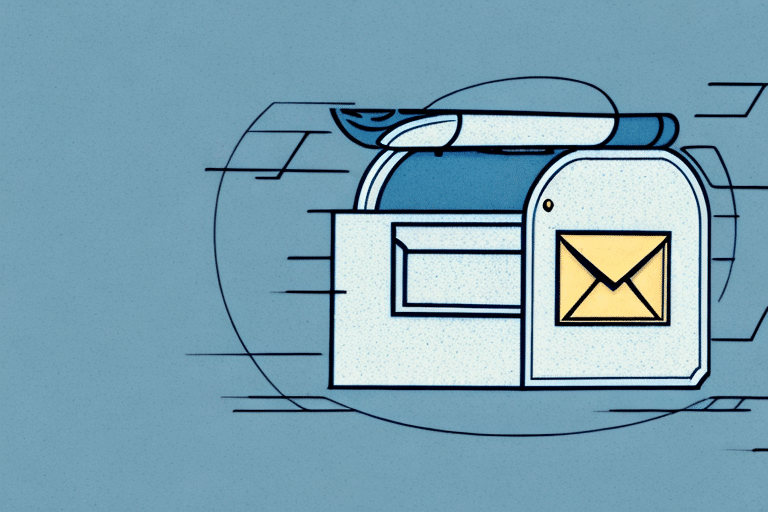What Is Insured Mail? A Comprehensive Guide
Insured mail is a postal service that provides protection for valuable items sent through the mail. This service allows customers to insure their mail up to a specified amount in the event of loss, damage, or theft. In this comprehensive guide, we will explore everything you need to know about insured mail—from its basics to its benefits, types of services available, and how it works. Whether you're sending a precious package or just curious about the process of insured mail, this guide is for you.
The Basics of Insured Mail: Understanding the Concept
Insured mail offers financial protection for mailed packages and documents. By choosing to insure their shipments, customers can declare a specific value for their items, ensuring compensation in case of loss, damage, or theft during transit. This service is commonly provided by major postal carriers such as the United States Postal Service (USPS), FedEx, and UPS.
The cost of insuring a package varies based on the carrier, the declared value of the item, and the destination. It's important to review each carrier's specific policies and pricing structures before selecting an insured mail service. Additionally, certain items may have restrictions or require special handling, so always consult with the carrier to ensure your package qualifies for insurance.
Benefits and Advantages of Insured Mail
Choosing insured mail provides several key benefits:
- Financial Protection: Compensation is available if your package is lost, damaged, or stolen.
- Tracking and Visibility: Most insured mail services offer tracking, allowing you to monitor your package's progress in real-time.
- Enhanced Security: Features like signature confirmation ensure that packages are delivered to the intended recipient.
- Faster Delivery Options: Insured services often include expedited shipping options for urgent or valuable items.
- International Coverage: Many carriers offer insured mail services for international shipments, providing global protection.
According to the USPS, insured mail can significantly reduce the stress associated with sending valuable items, ensuring peace of mind for both individuals and businesses.
Types of Insured Mail Services Available
Insured mail services vary by carrier and the level of protection required. Here are some common types:
Domestic Insured Mail
Domestic insured mail services cover shipments within the same country. For example, USPS offers Priority Mail Express, which includes up to $100 insurance and guarantees overnight delivery to most U.S. locations.
International Insured Mail
International services provide coverage for packages sent to other countries. Rates and coverage limits vary based on the destination and the carrier. It's crucial to understand each carrier's international insurance policies, as regulations and coverage can differ significantly from domestic services.
Specialized Insured Services
For high-value items such as jewelry, artwork, or electronics, some carriers offer specialized insured services. These may include additional insurance coverage, specialized packaging, and dedicated courier services to ensure maximum security and protection.
How Insured Mail Works: Step-by-Step Guide
- Select Insured Mail Service: Choose the insured mail option when preparing your package for shipping.
- Declare Package Value: Declare the value of the items being shipped and pay the corresponding insurance fee.
- Prepare Packaging: Use appropriate packaging materials to secure your items, following the carrier's guidelines.
- Label and Track: Affix the provided tracking label to your package. Use the tracking number to monitor its status throughout transit.
- File a Claim if Needed: If your package is lost, damaged, or stolen, contact the carrier promptly to file a claim for compensation.
Each carrier may have specific procedures and timelines for filing claims, so it's important to familiarize yourself with their policies to ensure a smooth process.
Coverage and Protection Limits
The coverage provided by insured mail varies based on the carrier and the declared value. Here are some general guidelines:
- USPS: Offers up to $5,000 in insurance for Priority Mail Express and Priority Mail shipments.
- FedEx: Provides up to $100 in automatic shipment value, with options to purchase additional insurance.
- UPS: Includes up to $100 in declared value protection, with extra coverage available for high-value items.
It's important to note that the coverage limit is not the same as the insurance cost. Declaring a higher value typically incurs additional fees. Always verify the terms and conditions with your chosen carrier to ensure adequate protection for your items.
Purchasing Insured Mail: Tips for Getting the Best Deals
To maximize the benefits and savings when purchasing insured mail, consider the following tips:
- Compare Carrier Rates: Evaluate the pricing and coverage options of different carriers to find the best fit for your needs.
- Take Advantage of Discounts: Some carriers offer discounts for bulk shipments or frequent users. Inquire about available discounts to reduce costs.
- Proper Packaging: Investing in quality packaging can minimize the risk of damage, potentially lowering insurance costs.
- Understand Carrier Policies: Familiarize yourself with each carrier's insurance policies, including exclusions and claim procedures, to avoid unexpected issues.
Additionally, consider using shipping management platforms to streamline the process and access competitive rates from multiple carriers.
Filing a Claim for Insured Mail: A Complete Guide
If your insured mail is lost, damaged, or stolen, filing a claim is essential to receive compensation. Follow these steps to ensure a successful claim:
- Contact the Carrier: Notify the carrier as soon as you realize there's an issue with your shipment.
- Gather Documentation: Collect all necessary documents, including the shipping receipt, tracking information, and proof of the item's value (e.g., invoices or receipts).
- Submit the Claim: Complete the carrier's claim form, providing all required information and supporting documents.
- Follow Up: Monitor the status of your claim and respond promptly to any requests for additional information.
- Receive Compensation: If your claim is approved, you will receive compensation up to the insured amount based on the carrier's policies.
It's important to file claims promptly, as carriers often have strict deadlines for submission. Review the specific claim procedures of your carrier to ensure compliance and expedite the process.
Common Mistakes to Avoid When Sending Insured Mail
To ensure your insured mail experience is smooth and successful, avoid these common pitfalls:
- Incorrect Valuation: Declaring an inaccurate value can lead to insufficient coverage or claim denials. Always declare the correct value of your items.
- Poor Packaging: Inadequate packaging increases the risk of damage. Use sturdy materials and follow carrier guidelines for secure packing.
- Missing or Incorrect Address: Ensure that both the sender's and recipient's addresses are complete and accurate to prevent delivery issues.
- Ignoring Carrier Policies: Failing to understand the carrier's insurance terms and conditions can result in unexpected exclusions or claim complications.
- Delayed Claims: Waiting too long to file a claim may result in denial. Submit claims promptly according to the carrier's timeline.
By being diligent and attentive to these details, you can maximize the benefits of insured mail and safeguard your valuable shipments effectively.
Conclusion
Insured mail is a reliable and secure postal service designed to protect valuable items sent through the mail. With its financial protection, tracking capabilities, and enhanced security features, insured mail offers peace of mind for both individuals and businesses. By understanding the types of services available, how insured mail works, and best practices for purchasing and filing claims, you can ensure the safe and timely delivery of your important packages.
Always remember to choose the right carrier, accurately declare the value of your items, and follow proper packaging and shipping protocols to avoid common mistakes. With these strategies in place, insured mail can be an invaluable tool for safeguarding your most precious shipments.






















